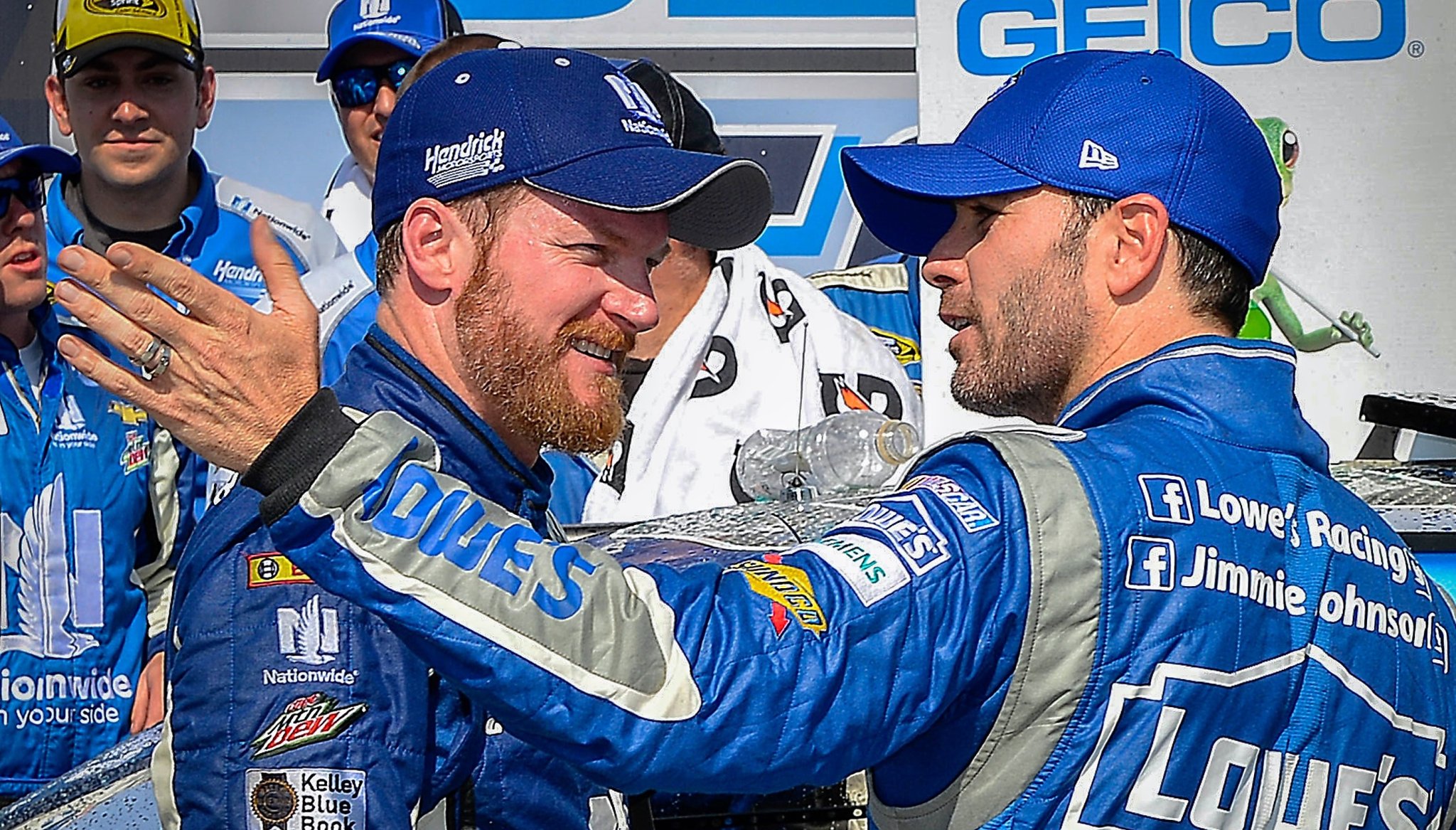

Dale Earnhardt, Jr., inarguably NASCAR’s most popular driver, said on Twitter over the weekend that he planned to donate his brain to science, for concussion research. Earnhardt was moved by the story of three former Oakland Raiders who planned to donate their brains in honor of Ken Stabler, who died in July from cancer.
After his death, researchers found that, by studying his brain, Stabler had Stage 3 Chronic Traumatic Encephalopathy. It’s an ailment similar to Alzheimer’s, and it occurs in some people who have suffered repeated blows to the head – like a football player, or possibly a race car driver.
Earnhardt, 41, has had multiple concussions over his racing career. The best-known instance occurred in 2012, when he crashed at a tire test in Kansas and had another a big crash at Talladega six weeks later. He voluntarily went to a doctor for evaluation, and had to sit out two Chase races because of the injury. Other drivers, including Jeff Gordon, admitted they might have kept quiet rather than miss a Chase race.

In late 2013, I wrote the first comprehensive story for Road & Track on the possible effects of CTE on race car drivers, done at the urging of my friend Amanda Gardstrom, daughter of NASCAR Hall of Fame driver Fred Lorenzen.
This is what I wrote: “He was still in his fifties when the symptoms started, according to his daughter, Amanda Gardstrom. The first telling sign came at her wedding in Mexico: ‘Dad didn’t understand he was giving me away the next day. It was the beginning of something heartbreaking.’ Two years later, while he was in Daytona for the 50th anniversary of the 500, a hotel clerk called Lorenzen’s room and asked him to bring down his credit card. ‘He didn’t know where he was, why he was there, or how he had gotten there’” Gardstrom said. They could no longer write such things off as fatigue or simple forgetfulness. Doctors eventually diagnosed some form of dementia, but Gardstrom felt her father’s symptoms—memory impairment, emotional instability, erratic behavior, depression, and impulse-control problems—didn’t match those for the familiar types, like Alzheimer’s.”
She began researching CTE, and came in contact with Boston University’s Chris Nowinski, a former Harvard college football player and WWE wrestler who was forced to retire from competition in 2003 after multiple concussions. He made the study of brain disease his career, and he is often the point man for the center’s “Brain Bank,” which collects brain tissue and spinal material from deceased athletes who displayed symptoms of CTE. “I’m very familiar with Fred Lorenzen’s case,” Nowinski said. “And I think there’s a strong possibility he suffers from CTE.”
Perhaps the scariest bit of information I gathered from Nowinski: You do not have to suffer a solid “hit” to get a concussion—the driver’s helmet, for instance, does not have to come into contact with a roll bar or a steering wheel. Merely an abrupt stop/start that makes the brain move slightly inside the skull can do it. And even with the recent advent of “soft” walls at some tracks, that would be difficult to prevent entirely. In addition, in order to determine cumulative damage, concussions a driver may have had in younger years must be added to any head injuries received in racing.
What exactly is CTE? Here’s how I described it in the Road & Track story: “CTE is a brain disease brought on by one or more concussions. Since its serious study began a decade ago, dozens of professional athletes, mostly in football, hockey, and wrestling, have been diagnosed with it. Junior Seau, the troubled NFL player who shot himself in 2012, had CTE. Not much is known about the disease except that it is characterized by the accumulation of a toxic protein, dubbed “tau,” in the brain. That buildup can be the result of multiple small concussions, a few major concussions, or even one big one, as evidenced by soldiers who have apparently developed CTE from exposure to a single bomb blast.”
The NFL, of course, brought CTE to light with the lawsuit filed by retired players, and settled for $765 million. The talk about CTE in racing has been far quieter, less public.
A classic case of a driver who may well have had CTE was LeeRoy Yarbrough, a NASCAR star who died in a mental institution in 1984 at age 46, several years after trying to kill his mother. Yarbrough crashed hard in a test at Texas Motor Speedway and again in Dan Gurney’s Eagle at Indianapolis Motor Speedway. After that, his memory lapses got worse, the pain never subsided, and he descended into alcohol and drug abuse.
“We raced because that’s what we did, that’s how we earned a living,” former champ Darrell Waltrip told me. “Many times, I knew I didn’t belong out there on the track. But nobody wanted to sit out. Nobody wanted someone else to drive their car.”
Research into CTE is still in its early stages, but already has led to some advances in, for example, helmet research. When a driver with the stature of Dale Earnhardt, Jr., acknowledges the issue, it’s a big, big deal.